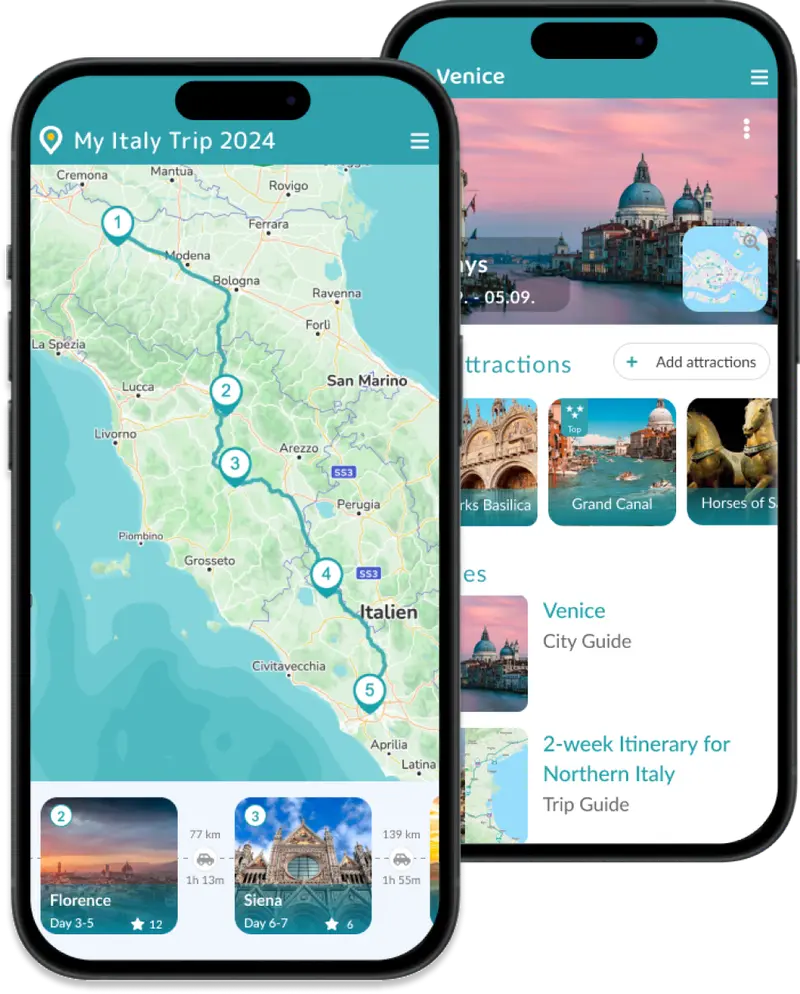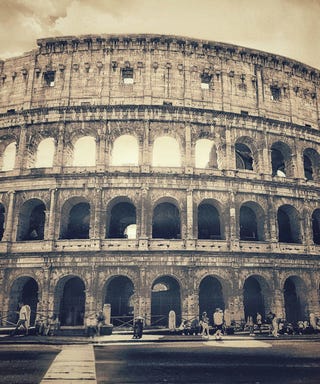With a population of around 2.8 million people, this eternal city is a vibrant metropolis in the Lazio region of Italy. Here, millennia of history, world-class art, and an unparalleled way of life merge into a unique cityscape. Immerse yourself in the heart of ancient Rome at the Roman Forum, marvel at the architectural marvel of the Pantheon, and be enchanted by the splendor of the Vatican, including the Sistine Chapel. Don't forget to throw a coin into the Trevi Fountain—a promise that you will return one day. In Rome, surrounded by the testimony of a great past, you will experience the beauty and vibrancy of Italian life in its finest form.
Top Highlights of Rome










Travel Information
Best Time to Visit Rome
Rome, with its Mediterranean climate, is a great destination to visit all year round.
The best time to visit Rome is during the months of April, May, September and October. During these months, you can enjoy pleasant temperatures, fewer crowds, and a beautiful atmosphere for exploring the city.
Summer brings temperatures above 30°C (86°F) and plenty of sunshine. A trip to the sea or an evening gelato provides a welcome relief from the heat.
Winter in Rome is relatively cool and humid but comes with the advantage of fewer tourists, resulting in shorter queues at major attractions. This season offers lower prices for flights and accommodations. Especially in December, the low winter sun casts a unique light over the city, and the pre-Christmas atmosphere is special.
How to get to Rome
By Plane
Rome is served by two main airports, Rome-Fiumicino (FCO) and Rome-Ciampino (CIA). Fiumicino is the larger of the two and acts as the main hub for international flights, while Ciampino is primarily used by low-cost airlines and for domestic flights. Both airports offer good transport links to the city center, allowing you to reach the city quickly and easily.
By Train
Traveling by train is sustainable alternative and can be part of the adventure. Italy boasts an excellent high-speed train network that connects Rome Rome Termini Central Station with most major Italian cities and many European capitals.
By Car
Driving in the city can be challenging due to heavy traffic and limited parking options. Many areas in Rome are ZTL zones, meaning access is restricted or charged for non-residents. Be sure to research parking options and traffic regulations in advance.
Getting around Rome
Buses are the most popular means of public transportation within the city center. The bus network is particularly dense and well-developed in the city center, where the metro does not operate. It provides easy access to the main attractions and neighborhoods. The Metro operates daily between 5:30 AM and 11:30 PM, with extended hours until 1:30 AM on Fridays and Saturdays. It's important to validate your ticket before starting your journey.
Fancy a roadtrip?
Be inspired by our hand-picked road trips.

History
Rome's grand saga begins as a modest settlement on the Tiber River and ascends to the zenith of imperial dominion. This empire, unmatched in scale, incorporated the entirety of continental Europe west of the Rhine, most of Asia west of the Euphrates, northern Africa, and the islands of the Mediterranean. Rome's foundational story, veiled in legend, tells of its beginning in 753 BC by the twins Romulus and Remus, and over centuries, Rome's dominion expanded significantly, influencing the modern world profoundly, particularly through the Catholic Church and Roman law.
Rome's ascent to power was marked by its military conquests, which brought it into contact with advanced cultures, notably the Greeks, from whom the Romans absorbed art, philosophy, and religion. This cultural amalgamation fueled Rome's societal development . The Republic era, commencing in 509 BC, was characterized by expansion and conflict, notably the Punic Wars against Carthage, which cemented Rome's dominance over the western Mediterranean .
Internal strife during the late Republic saw the rise of influential figures like Julius Caesar, whose assassination led to the establishment of the Roman Empire by his adopted son, Octavian (later Augustus), in 27 BC. This transition marked the start of a period of peace and prosperity known as the Pax Romana, during which Rome flourished in art, literature, and governance .
Rome's embrace of conquered peoples into its societal and political framework, a stark contrast to the practices of Greek city-states, was a key to its success as an imperial power. This inclusiveness, coupled with military prowess and political institutions, facilitated Rome's sustained dominance and the integration of Roman culture across its vast territories.
The decline of Rome was gradual, beset by internal corruption, economic troubles, and external pressures, culminating in the fall of the Western Roman Empire in the 5th century AD. Yet, the legacy of Rome endures in modern legal systems, languages, the arts, and the very fabric of Western civilization.




